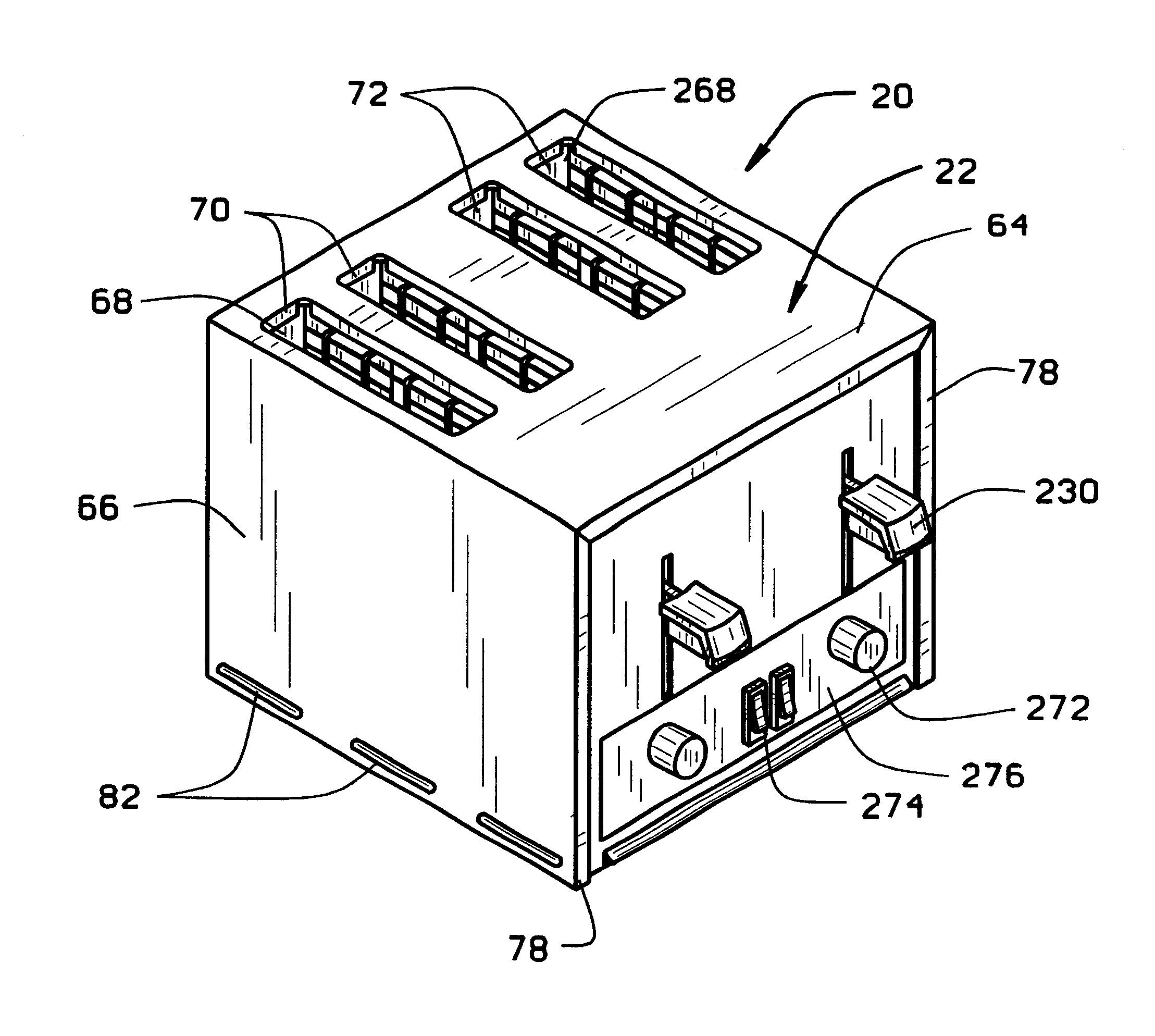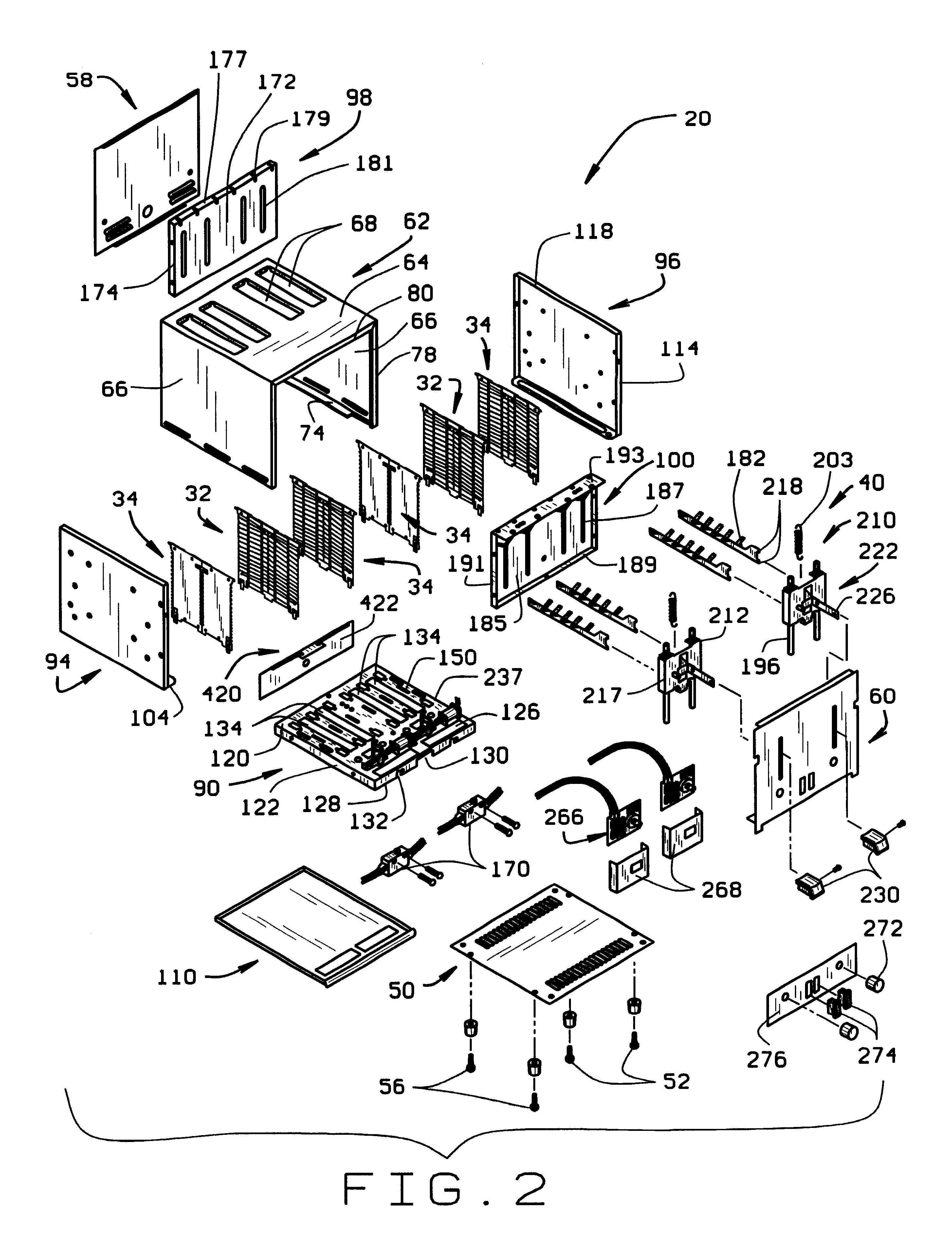Toaster assembly and method for toasting bread products
a technology of toasting bread and assembly, which is applied in the direction of heater elements, process and machine control, instruments, etc., can solve the problems of occupying space, unnecessarily heating the heater/toaster unit, and large heat radiated from the side of the heater/toaster unit boards
- Summary
- Abstract
- Description
- Claims
- Application Information
AI Technical Summary
Benefits of technology
Problems solved by technology
Method used
Image
Examples
Embodiment Construction
Now for a more detailed description of the toaster assembly 20, the housing 22 comprises a floor 50 supported by four feet members 52 attached as by screws 56. Housing 22 further comprises a back outer wall 58 and a front wall 60. Housing 22 also comprises a top cover casement 62 which generally an inverted "U" shape with a horizontal roof 64. Roof 64 depends at its side edges into vertical side walls 66. The roof 64 has rectangular openings 68 grouped in two pairs 70 and 72, for insertion of bread products into their respective heating / toaster compartments 36. At the bottom edge of each side wall 66 is an inwardly projecting horizontal flange 74. Extending inwardly from the front and rear edges of side walls 66 are L-shaped flanges 78, which are aligned with L-shaped flanges 80 that project inwardly from the front and rear edges of roof 64, respectively. The side walls 66 have vents 82.
Turning now to the inner frame 24 which is generally positioned within the housing 22, the frame ...
PUM
 Login to View More
Login to View More Abstract
Description
Claims
Application Information
 Login to View More
Login to View More - R&D
- Intellectual Property
- Life Sciences
- Materials
- Tech Scout
- Unparalleled Data Quality
- Higher Quality Content
- 60% Fewer Hallucinations
Browse by: Latest US Patents, China's latest patents, Technical Efficacy Thesaurus, Application Domain, Technology Topic, Popular Technical Reports.
© 2025 PatSnap. All rights reserved.Legal|Privacy policy|Modern Slavery Act Transparency Statement|Sitemap|About US| Contact US: help@patsnap.com



